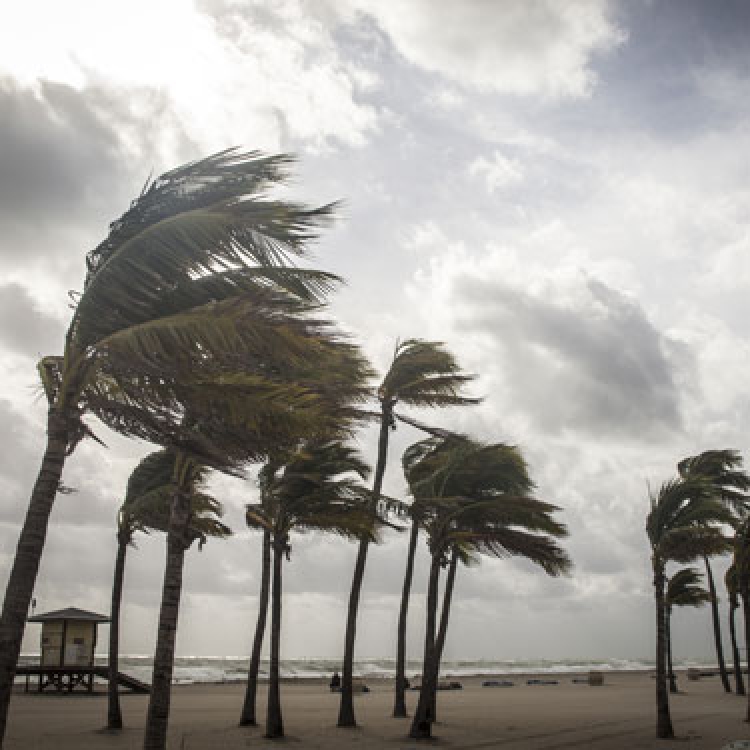Avoid being caught up in the storm

Businesses would benefit enormously from implementing risk management and business continuity strategies for hurricanes and other natural hazards. Owen Lewis of FM Global discusses what they can do.
Natural hazards such as hurricanes have secured a permanent place on many businesses' risk radars. Last year brought 17 major storms, 10 hurricanes (six of which were classified as category three or higher) and a severe wake-up call to risk managers. The occurrence of a 'once in a lifetime' storm has become an annual event for many locations, yet many businesses have not adapted to this changing reality. Given that it has been estimated that Hurricane Harvey and Hurricane Irma alone had an economic impact of US $290 billion, coupled with the expectation that hurricanes are going to become more frequent and less manageable, businesses need to be proactive when it comes to implementing risk management strategies.
How to be hurricane ready
According to a survey commissioned earlier this year by FM Global, 62% of senior financial executives at companies with operations in hurricane hot spots admitted they were "not completely prepared" for the hurricane season. With the peak of the hurricane season fast approaching, it is vital that businesses have effective risk management strategies in place to mitigate any damage or disruption suffered.
From my experience as a loss prevention engineer over 14 years, it is clear that a variety of proactive steps businesses can build resilience to hurricane risk. These include:
- Committing to a proactive risk engineering programme. Establishing where your organisation is vulnerable before a loss occurs makes it significantly easier for businesses to reduce the damage hurricanes can cause.
- Creating business continuity plans; establishing alternate suppliers for key components would support consistent delivery of services whilst a business is recovering.
- Creating location-specific emergency response plans, which address the natural hazard exposure faced at each location, e.g. windstorm, flood or earthquake. This helps to ensure that employees are adequately briefed on actions required should a hurricane or other natural hazard event impact a facility.
- Efforts such as regular inspections of rooftops, ensuring back-up generators are ready, securing doors, windows, and valuable objects. This would reduce potential damage from the high wind speeds observed in hurricanes.
- To mitigate costly flood damage, which typically results in the largest part of hurricane-related losses, elevate or seal off valuable equipment, provide physical flood barriers to prevent flood ingress to buildings, secure storage tanks, inspect fire protection equipment and prepare to turn off utilities in the event of a hurricane.
- Crisis management in the form of a clear communications programme when recovering from a loss. A clear, structured plan created in concert with a public relations or crisis management team can help reassure customers and clients.
Predictive Analytics
Hurricane protection strategies can seem daunting for businesses. The question often posed is whether it is even possible to manage this recurring risk. Understanding where these exposures might lie across a business' and its supply chain is the first step.
Quantifying the enterprise level exposure and lost growth opportunities comes next to complete the risk evaluation. To prioritise where to take action and make the business more resilient, predictive analytics tools can be used to focus on the most beneficial risk improvement actions. By predicting which locations are most at risk from hurricane damage and the risk engineering recommendations that will be most valuable in reducing the exposure, businesses can implement appropriate risk management strategies. To help clients understand, prioritise and manage their risk, FM Global developed its own predictive analytics tool based on the data obtained from the 100,000 site visits.
every $1 spent on hurricane protection can prevent $105 in property business losses and disruption
Financial return of hurricane protection
Given the financial pressure much of the C-Suite is under, it is vital that risk managers and insurers can effectively communicate the potential business exposure and present a range of mitigation solutions to the C-Suite. This enables business risk to be understood and improvements acted on to match the defined tolerance for interruption for various products or services reliant on the exposed locations. A recent analysis shows that every $1 spent on hurricane protection can prevent $105 in property business losses and disruption - a fantastic return on investment.
Resilience and business continuity
After a hurricane strikes, the businesses that are left standing are not the lucky ones, they are the resilient ones. Facilities with well-organised flood emergency response plans have almost 70% less damage than those without and are likely to resume operations sooner than those without adequate flood emergency response plans. Resilience is a vital asset in helping to ensure long-term success - the question is, will your business make the choice to invest in resilience?

Owen Lewis is group manager, account engineering at FM Global's London operations
